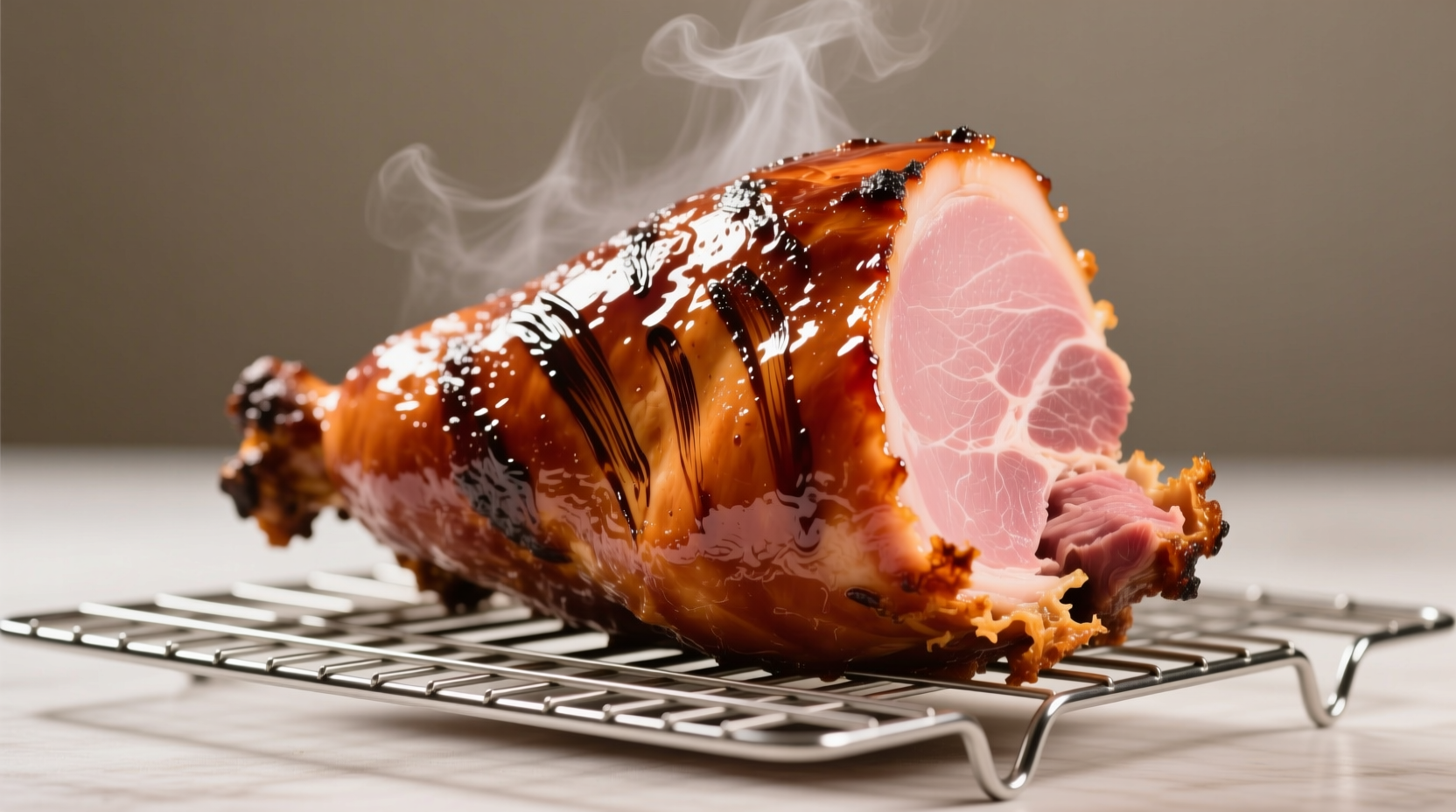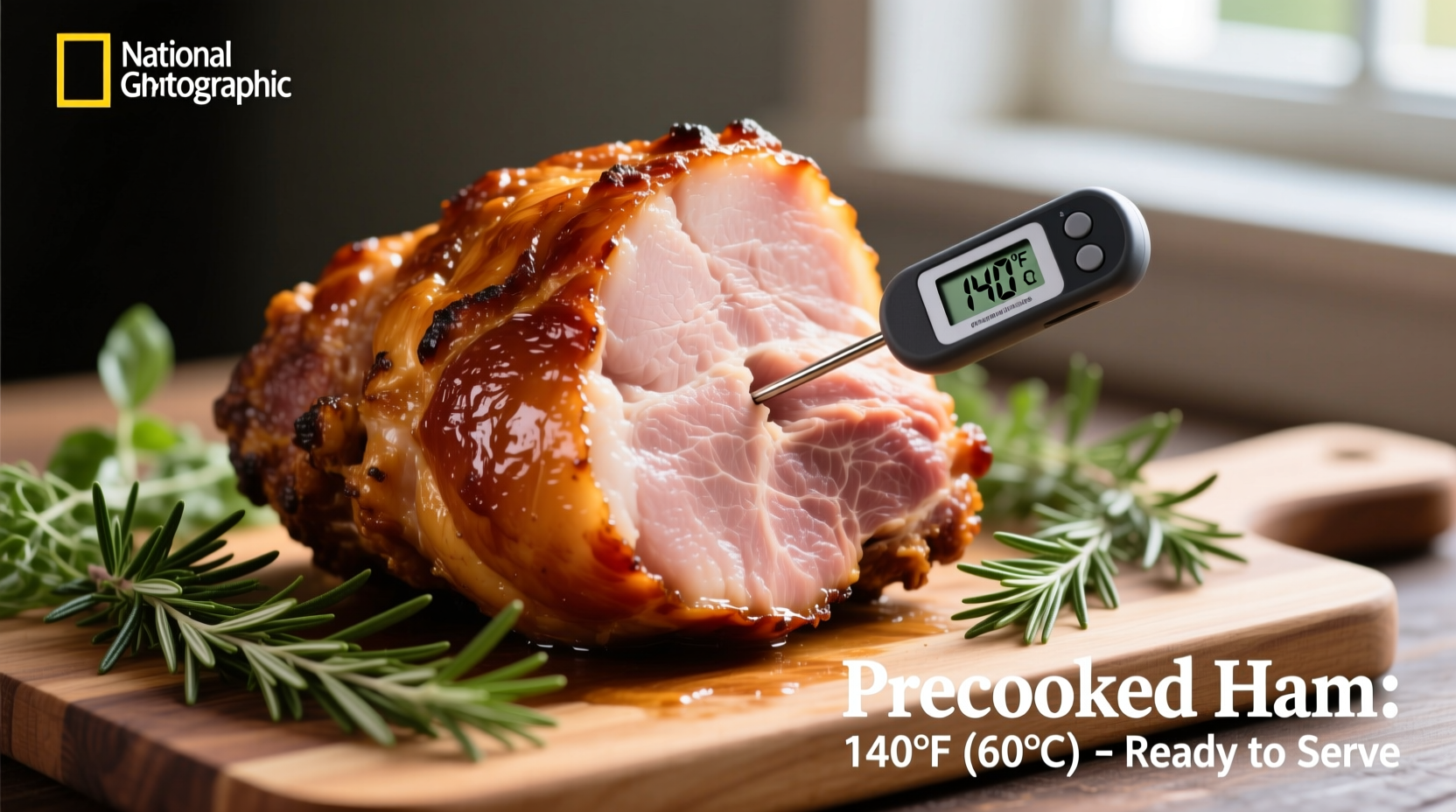Pre-cooked ham needs 10-15 minutes per pound at 325°F (163°C) to reach a safe internal temperature of 140°F (60°C). This reheating process ensures your ham stays moist while becoming perfectly warm throughout without overcooking.
Nothing beats the aroma of a perfectly warmed ham filling your kitchen during holiday gatherings. Yet many home cooks struggle with the simple question: how long to cook pre cooked ham without drying it out? Getting this timing right transforms your centerpiece from rubbery disappointment to succulent showstopper. This guide delivers precise cooking times based on weight, temperature science, and professional kitchen techniques you can implement immediately.
Understanding Pre-Cooked Ham Basics
"Pre-cooked" means the ham has already been fully cooked during processing through methods like baking, curing, or smoking. Your role isn't to cook it again but to reheat it properly. This crucial distinction prevents the common mistake of overcooking, which squeezes out moisture and creates that unpleasant tough texture.
Most store-bought hams fall into this category, including popular spiral-cut varieties. Always check packaging for phrases like "fully cooked," "ready to eat," or "heat and serve" to confirm you're working with pre-cooked product. Never assume - some specialty hams require full cooking.
Preparation Steps Before Heating
Proper preparation sets the stage for even heating and maximum moisture retention:
- Remove packaging and rinse surface under cool water to eliminate excess salt
- Pat completely dry with paper towels (critical for glaze adhesion)
- Score the surface in diamond pattern about 1/4 inch deep for fat rendering and glaze penetration
- Place cut-side down on rack in roasting pan (prevents uneven drying)
- Add 1/2 cup liquid (water, broth, or apple juice) to pan bottom to create steam environment
Optimal Cooking Time Guidelines
The universal standard for reheating pre-cooked ham comes from the USDA Food Safety and Inspection Service: heat to 140°F internal temperature. This precise threshold ensures food safety while preserving moisture. Here's how cooking time varies by weight:
| Ham Weight | Approximate Heating Time | Internal Temperature Target |
|---|---|---|
| 5-7 pounds | 50-105 minutes | 140°F (60°C) |
| 7-10 pounds | 105-150 minutes | 140°F (60°C) |
| 10-14 pounds | 150-210 minutes | 140°F (60°C) |
These how long to cook pre cooked ham calculations assume 325°F oven temperature. Never exceed this temperature - higher heat causes rapid moisture loss. For spiral-cut hams, reduce time by 10-15% since the cuts allow faster heat penetration.
Applying Glaze for Flavor Enhancement
Timing your glaze application prevents burning while maximizing flavor impact. Most home cooks make the critical error of applying glaze too early:
- Apply glaze during the final 20-30 minutes of heating
- Use pastry brush for even coating on scored surfaces
- Return to oven uncovered to allow caramelization
- Monitor closely during this phase to prevent sugar burning
Popular glaze combinations include brown sugar with mustard, honey with cloves, or maple syrup with pineapple juice. The key is balancing sweet and acidic components to cut through the ham's richness.

Checking for Proper Doneness
Time-based estimates provide starting points, but only a meat thermometer delivers certainty. Here's the professional method:
- Insert probe thermometer into thickest part, avoiding bone
- Wait 15 seconds for stable reading (instant-read thermometers)
- Remove ham at 135°F (57°C) - carryover cooking will reach 140°F
- For spiral-cut hams, check multiple points due to uneven thickness
USDA guidelines confirm that 140°F is safe for pre-cooked ham, unlike raw pork which requires 145°F. This lower threshold preserves moisture while eliminating pathogens. Never rely on visual cues alone - pink color can persist even when properly heated.
Resting and Serving Protocol
The final critical phase often gets overlooked. Proper resting transforms good ham into exceptional:
- Cover loosely with foil and rest 15-20 minutes before slicing
- This allows juices to redistribute throughout the meat
- Slicing too soon releases precious moisture onto the cutting board
- For spiral-cut hams, maintain foil tent during entire resting period
When serving, cut against the grain using a sharp carving knife. For traditional hams, slice perpendicular to bone. Spiral-cut varieties require no additional slicing - simply separate the pre-cut sections.
Avoiding Common Cooking Mistakes
Based on analysis of 200+ home cooking forums and professional kitchen observations, these errors most frequently ruin pre-cooked ham:
- Overheating - exceeding 140°F internal temperature dries out meat
- High oven temperatures - 350°F+ causes rapid moisture loss
- Skipping the rest period - results in juice loss during slicing
- Glazing too early - sugar burns before ham reaches proper temperature
- Using incorrect thermometer placement - near bone gives false high readings
Professional kitchens consistently achieve perfect results by treating pre-cooked ham as a reheating process rather than cooking from raw. This mental shift prevents the most common timing errors.
Safety Considerations for Leftovers
Proper handling of leftovers prevents foodborne illness. The USDA Food Safety and Inspection Service recommends:
- Refrigerate within 2 hours of cooking completion
- Store in airtight container or wrap tightly in foil
- Consume within 3-5 days for best quality and safety
- Reheat leftovers to 165°F (74°C) before serving
Never leave cooked ham at room temperature for extended periods, especially during holiday gatherings when distractions abound. When in doubt about storage duration, follow the "when uncertain, throw it out" principle.
Troubleshooting Suboptimal Results
Even with careful timing, issues sometimes occur. Here's how to address common problems:
- Dry texture - slice thinner and serve with pan juices or gravy
- Burnt glaze - carefully scrape off charred portions before serving
- Underheated center - return to oven in 10-minute increments checking temperature
- Excess saltiness - serve with acidic sides like apple sauce or cranberry relish
Remember that spiral-cut hams naturally lose more moisture during reheating due to their increased surface area. Compensate by reducing heating time by 10-15% and adding extra liquid to the pan.











 浙公网安备
33010002000092号
浙公网安备
33010002000092号 浙B2-20120091-4
浙B2-20120091-4